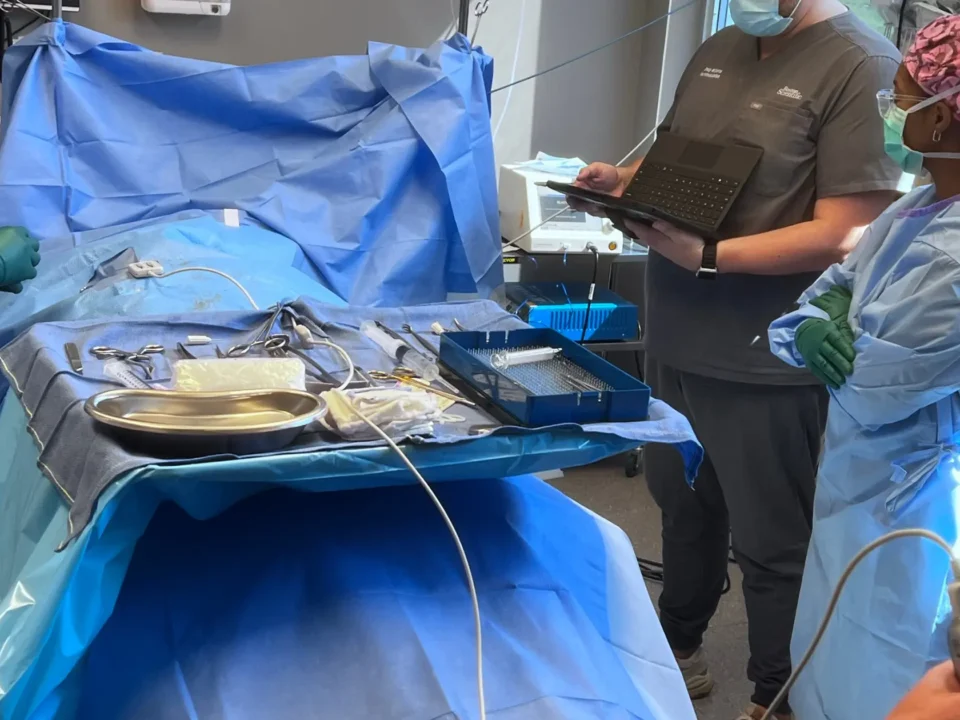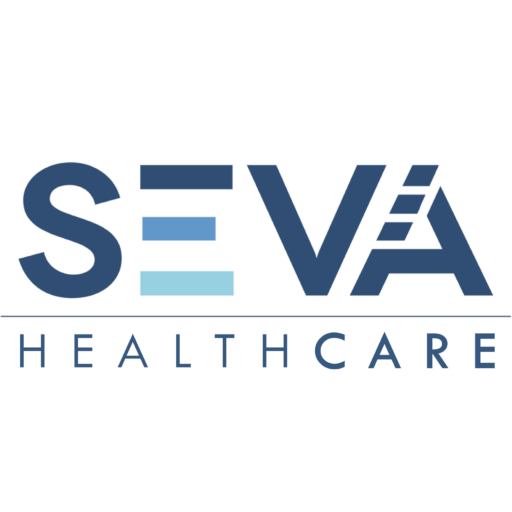Marshall: This is Oklahoma Pain and Wellness Center podcast with Dr. Chan.
Dr. Chan: Morning Marshall, thank you for inviting me here to get a podcast.
Marshall: Absolutely, we’re so excited to have you on the podcast today. You are one of the physicians with Oklahoma Pain and Wellness, and Dr. Chan, how long have you been working with Oklahoma Pain and Wellness?
Dr. Chan: I just joined Oklahoma Pain and Wellness Center in June of this year, so I’ve been here about three months.
Marshall: So, you’ve been with Oklahoma Pain and Wellness for three months, now Oklahoma Pain and Wellness, it is one of the Tulsa pain management centers here in town, and what is your specialty? What is your specialty as a physician?
Dr. Chan: My specialty is anesthesia and Tulsa pain management. I’m board certified and fellow trained in both specialty.
Marshall: I know that most people they hear about anesthesiologists, but what specifically does that mean? What in an operating room, or in surgery, or what you do on a daily basis? What really does that mean?
Dr .Chan: I don’t really do anesthesia nowadays. My main practice is in Tulsa pain management. In anesthesia, the doctors generally provide sedation, or general anesthesia nerve block for surgical cases.
Marshall: And how does that relate now to Tulsa pain management?
Dr. Chan: In anesthesia, we do a lot of nerve blocks, epidural injections for acute post operative pain, and as an extension of that, a lot of anesthesiologists just started going into chronic Tulsa pain management where the same type of blocks is used.
Marshall: So, you’re taking the same procedures or the same practices and applying it to Tulsa pain management, because ultimately that’s what you’re trying to manage. Is you’re trying to manage the pain, whether it be chronic pain, or just post-operative pain.
Dr. Chan: That is correct. We also do some medication management, we approach pain as a comprehensive pain management, which involves medication management, injections, spinal cord simulator, pain pumps.
Marshall: I know that a lot of the listeners they’re asking who is Dr. Chan? Why don’t you tell me a little bit about yourself, a little bit about your bio, and what makes Dr. Chan, Dr. Chan.
Dr. Chan: Sure. I was educated in Singapore, I got my medical education in Singapore. I’ve been in the US since 2003. I did my internship at St. Vincent’s Hospital in Worcester, Massachusetts, and then I moved to San Francisco, where I spent three years doing my residency in anesthesia, followed by a year at the same, at UCSF pain management clinic for my pain fellowship.
Marshall: Actually you covered all the coasts all across the USA.
Dr. Chan: That is correct.
Marshall: You were in Massachusetts, and then you went all the way across the country to San Francisco.
Dr. Chan: That is correct. Now I am in the Midwest.
Marshall: So, let me ask you, are you a Patriots fan?
Dr. Chan: No, I’m not.
Marshall: What about a 49ers fan? No 49ers.
Dr. Chan: No 49ers.
Marshall: That’s fair. At what point did you actually move to Tulsa?
Dr. Chan: I moved to Tulsa in June of this year, just specifically just to work for Oklahoma Pain and Management Center.
Marshall: How did you first hear about Oklahoma Pain and Wellness?
Dr. Chan: I was looking for a job in and around the Southwest Missouri, in Northeast Oklahoma area. At the time I was working in Joplin, and just so happened that a job opening opened up here, and I interviewed and the rest is history.
Marshall: What got you into the pain management field, the anesthesiology and pain management?
Dr. Chan: I’ve always wanted to pain management. I like doing procedures, I’m good with my hands, and so it’s a natural extension that I move from anesthesia into chronic pain management.
I do enjoy interacting with patients, so that is also a reason why I got into pain management.
Befizetés Nélküli Bónuszok Története: Amit Betzoid Magyarország Feltárt
Az online szerencsejáték világában a bónuszok mindig is kulcsszerepet játszottak a játékosok vonzásában és megtartásában. Különösen igaz ez a befizetés nélküli bónuszokra, amelyek lehetőséget biztosítanak a játékosoknak, hogy kockázat nélkül próbáljanak szerencsét. Az elmúlt évtizedekben jelentős fejlődésen ment keresztül ez a promóciós eszköz, és a Betzoid Magyarország átfogó kutatása most betekintést nyújt ennek a népszerű marketing stratégiának a történetébe és fejlődésébe. A tanulmány nemcsak a bónuszok kialakulását vizsgálja, hanem azok hatását is az online szerencsejáték piac alakulására és a játékosok viselkedésére.
A befizetés nélküli bónuszok kialakulása
Az online kaszinók megjelenésével, az 1990-es évek közepén kezdődött a befizetés nélküli bónuszok története. Az első internetes szerencsejáték oldalak megjelenésekor a szolgáltatók hamar felismerték, hogy valamilyen módon meg kell győzniük a potenciális játékosokat a platform kipróbálásáról. Mivel akkoriban az online fizetési rendszerek még gyerekcipőben jártak, és sokan bizalmatlanok voltak az internetes pénzügyi tranzakciókkal szemben, a befizetés nélküli bónuszok ideális megoldásnak bizonyultak.
Az első ilyen promóciók rendkívül egyszerűek voltak: általában néhány ingyenes pörgetést vagy kis összegű játékkreditet kínáltak regisztráció után. A Betzoid Magyarország kutatása rámutat, hogy 2000-2005 között ugrásszerűen megnőtt az ilyen típusú ajánlatok száma, ahogy egyre több szolgáltató lépett piacra, és fokozódott a verseny a játékosok megszerzéséért.
Magyarországon a befizetés nélküli bónuszok valamivel később, a 2000-es évek második felében kezdtek elterjedni, amikor a nemzetközi szolgáltatók felfedezték a közép-európai piacban rejlő lehetőségeket. Ezek a korai ajánlatok gyakran minimális feltételekkel jártak, és viszonylag könnyű volt teljesíteni a kifizetési követelményeket is.
A szabályozás és a feltételrendszer átalakulása
A 2010-es évek elején jelentős változás következett be a befizetés nélküli bónuszok területén. Ahogy a szerencsejáték-szabályozás világszerte szigorodott, úgy váltak összetettebbé a bónuszfeltételek is. A Betzoid Magyarország elemzése szerint ez az időszak hozta el a részletes “Általános Szerződési Feltételek” megjelenését a bónuszajánlatokhoz kapcsolódóan.
A legtöbb szolgáltató bevezetett olyan korlátozásokat, mint a forgalmi követelmények (wagering requirements), maximális kifizetési limitek, és időkorlátok. Ezek a feltételek biztosították, hogy a befizetés nélküli bónuszok továbbra is vonzóak maradjanak a játékosok számára, de csökkentsék a kaszinók pénzügyi kockázatát.
A magyar piacon különösen érdekes fejlemény volt, amikor 2013-ban szigorították a hazai szerencsejáték-szabályozást. Ennek hatására sok nemzetközi szolgáltató kivonult, vagy átalakította működését, ami a befizetés nélküli bónuszok kínálatát is befolyásolta. A megmaradt platformok gyakran speciális, a magyar játékosokra szabott promóciókat kezdtek kínálni, hogy megtartsák versenyelőnyüket ebben a megváltozott környezetben.
Modern trendek és a digitális marketing forradalom
Az elmúlt évtizedben a befizetés nélküli bónuszok újabb evolúción mentek keresztül. A Betzoid Magyarország kutatása szerint a mobileszközök elterjedése és a közösségi média térhódítása alapjaiban változtatta meg e promóciók jellegét és terjesztési módját. Ma már gyakran láthatunk olyan ajánlatokat, amelyek kifejezetten egy-egy alkalmazás letöltéséhez vagy közösségi média interakcióhoz kötődnek.
Az adatvezérelt marketing megjelenésével a szolgáltatók személyre szabottabb befizetés nélküli bónuszokat kínálnak. A játékosok preferenciái, korábbi aktivitása és játékstílusa alapján célzott ajánlatokat kapnak, amelyek növelik a konverziós arányt és a játékoshűséget. Ez a fajta precíziós marketing jelentősen hatékonyabbá tette ezeket a promóciókat.
Érdekes trend továbbá a gamifikáció megjelenése: sok platform ma már játékos elemeket épít be a bónuszrendszerébe, például küldetéseket, szintlépéseket vagy teljesítménytáblákat kínálva. Ezek a megoldások nemcsak vonzóbbá teszik a befizetés nélküli bónuszokat, de hosszabb távú elkötelezettséget is eredményeznek a játékosok részéről.
A jövő kilátásai
A Betzoid Magyarország előrejelzése szerint a következő években további innovációk várhatók a befizetés nélküli bónuszok területén. A virtuális valóság (VR) és a kiterjesztett valóság (AR) technológiák integrálása új lehetőségeket nyit meg a promóciók terén. Elképzelhető, hogy a jövőben a játékosok virtuális környezetben “vadászhatnak” bónuszokra, vagy AR-alapú helyszíni aktivitásokért cserébe kaphatnak jutalmat.
A blockchain technológia és a kriptovaluták terjedése szintén hatással lehet erre a területre. A decentralizált szerencsejáték platformok új típusú, transzparensebb bónuszrendszereket vezethetnek be, amelyek smart contractokon alapulnak, és automatikusan teljesítik a feltételeket.
A szabályozási környezet további szigorodása ugyanakkor kihívást jelenthet. Több európai ország már most is korlátozza bizonyos típusú bónuszok alkalmazását, és ez a trend várhatóan folytatódni fog, ami újabb kreativitásra készteti majd a szolgáltatókat.
A befizetés nélküli bónuszok története tehát korántsem ért véget – sokkal inkább egy folyamatosan alakuló, innovatív marketing eszközről beszélhetünk, amely az online szerencsejáték ipar fejlődésével párhuzamosan alakul tovább. A Betzoid Magyarország kutatása értékes betekintést nyújt ebbe a fejlődési folyamatba, segítve mind a játékosokat, mind az iparági szakembereket a trendek és lehetőségek jobb megértésében. Ahogy a technológia és a fogyasztói szokások változnak, úgy formálódik tovább ez a népszerű promóciós eszköz is, amely immár több mint két évtizede szerves része az online szerencsejáték kultúrának.
Marshall: Sure, with getting into pain management, from the other physicians that I’ve interviewed and talked with, it’s really quite a rewarding field, because you get to interact with a lot of patients, from what I’ve heard.
You get to interact with patients, and you’re really addressing the thing that’s a nuisance, and a challenge in a daily obstacle that they face, which is pain. Tell me a little bit about your experience in working with patient’s pain in that capacity.
Dr. Chan: It’s a very varied experience, but we do make quite a bit of significant changes in some of the patient’s lives, because as you know pain management is difficult, a lot of physicians do not want to deal with pain patients.
In many cases the pain doctors are the last resort for these patients, and it’s very rewarding to be able to actually make a difference and turn a patient’s life around, and that is the best part about doing pain management.
Marshall: Now you do a series of procedures, and we’re going to get into some of them. But, tell me, first and foremost, I’m a prospective patient let’s say. The first thing that I’m going to say is, “Oh no, surgery procedures no way,” because I’m going to think that this is going to be just be super painful for me.
But, real quick, do these procedures that were about to get into, do they hurt?
Dr. Chan: Yes, they do hurt a little, but we do use measures to mitigate the pain. We use a very small needle to numb the skin before we actually put the actual block needle in. For patients who request it, we also offer sedation for these procedures.
Marshall: So, you use sedation for the Tulsa pain management. Also, they might pinch a little bit, it may be discomforting a little bit, but the whole goal for what you’re doing is pain management for the patient. Is that right?
Dr. Chan: That is correct.
Marshall: So, we’re fixing what sometimes has been a year-long chronic pain?
Dr. Chan: Or even more than a year.
Marshall: Decade-long.
Dr. Chan: That’s correct.
Marshall: You find that some patients deal with it for decades?
Dr. Chan: Yes.
Marshall: Let’s get into some of these procedures here. Peripheral neuro-stimulator implantation for occipital headache. What the heck is that?
Dr. Chan: Basically, it’s just like the spinal cord stimulator, we use electrical signals to disrupt the pain. So, instead of putting in the spinal cord with peripheral stimulator, we put it under the skin close to the peripheral nerves, in this case will be the occipital nerve.
Occipital nerve basically supplies the back of your skull, so the idea is that, by creating a pleasant sensation over the area where the pain is, in this case in the occipital part of the skull, it reduces the pain felt in that area.
Marshall: Where is the occipital part of the skull? Am I close to it at the back, or the front, or the top or where is that?
Dr. Chan: It’s actually the back, closer to be the skull above the neck.
Marshall: So, right above the neck. What about this next procedure, this kyphoplasty for vertebral body osteoporotic fractures.
Dr. Chan: Kyphoplasty is a procedure where we put in cement to reduce, to fill up a fracture of the vertebra. Basically, this happens a lot in elderly patients who has osteoporosis, which is softening of the bone.
The fracture causes the vertebral body to collapse forward, and that causes the patient’s spine to flex forward. Being flex forward actually introduces a lot of instability to the spine, because the center of gravity is shifted forward, so the patient is prone to falls, and also compromise the patient’s ability to breathe, because it presses on the chest and prevents the diaphragm from moving down.
By reducing the fracture, in other words by restoring the height of fracture, and filling with cement we prevent this complications from happening. It also reduces pain because, when you have a fracture, and the fracture is not fixed, you get movement of the bone, and that usually causes pain.
By putting in bone cement, it actually stops the movement of the fracture.
Marshall: This bone cement actually provides more stability for the spine?
Dr. Chan: That’s correct.
Marshall: I might have this whole osteoporotic fracture thing, because my mom always telling– I’m always falling down. I’m 6ft 7″, and I’m pretty clumsy, so I feel like I have most of these things that you’re talking about. Maybe, maybe not. What is the bursa injections here?
Dr. Chan: Bursa basically is a a so-called friction pad that is located close to a tendon, or a bone. What it does, it prevents a tendon from rubbing against a bone, and consequently being worn out.
The bursa do get inflamed, and it starts causing pain. So, a typical bursa inject is over the hip, which is like the side of the upper thigh. As well as the other bursa’s too, like in the knee joints, and close to the elbow.
But, the ones that we deal with a lot is usually the Trochanteric bursa which is basically the ones at the hip. So, what we do, is we inject steroids into the bursa and that usually relieves the pain.
Marshall: That’s for the tendons rubbing across the joint. It makes it more comfortable for that to happen.
Dr. Chan: That’s correct.
Marshall: What about this super hypogastric block for chronic pelvic pain?
Dr .Chan: Superior hypogastric block, just like the celiac plexus block we talk about, the hypogastric block is a collection of nerves in the lower abdomen that supplies the contents of the pelvic cavity, like the uterus, the lower intestine and the colon.
Patients with pain lower chronic pelvic pain we do offer this block. Again, we introduce the needle from the back, and place it just over the front of the spine, where the hypogastric block is.
Marshall: Now tell me about joint injections affecting Tulsa pain management.
Dr. Chan: We do joint injections in the joints that are arthritic and causing pain like the shoulder joints, the hip joints, as well as the knee joints. These are very simple injections because the joint generally is fairly superficial, except for the hip joint.
We normally use x-ray, or ultrasound, we do the injections so that we know for sure we’re getting into the into the joint cavity, and again we put in steroids.
Marshall: So, you’re putting in steroids into either the shoulder, the hip, the knee, a number of different joints?
Dr. Chan: That’s correct.
Marshall: For Tulsa pain management, I know that you guys can do a lot of different things, what about this next one? Help me with this, the intrathecal drug delivery pump implantation.
Dr. Chan: Intrathecal basically means in the spine. Basically what we do is we put a catheter in the spinal column, within the space of the spinal fluid. The idea is that we deliver the medication directly where it’s needed, instead of having to have the patient take it orally, get it metabolized with their liver and then distributed throughout the whole body.
It bypasses all that metabolism, as well as distribution around the whole body, so it targets the medication where it’s needed, in the spinal cord. That way, we minimize side effects. We also are able to deliver a fairly high dose of the medication to where it’s needed.
In cases like cancer pain, where patients are unable to take enough medication orally, either because they are nauseous, or they have severe constipation from the medication, or if they require very high doses of of pain medication.
This pump system delivers medication where it’s needed, and we can again deliver fairly high doses to overcome the cancer pain. In addition to morphine, we also implant pumps that contains Baclofen. Baclofen is a medication that is used to treat spasticity, or tight muscles.
Patients with cerebral palsy, multiple sclerosis, strokes, spinal cord injury they normally have very tight muscles,. If they are unable to tolerate oral medications, we can implant Baclofen pump, and again we can use fairly high doses, because we can bypass all the metabolism and absorption.
We also use another new medication, it’s not new anymore, but it’s fairly new compared to morphine. It’s a medication called Ziconotide Prialt which is a non-narcotic pain medication that’s also been used successfully to treat pain.
Marshall: You can use all three of these different medications, and you can actually directly deliver them to the pain site.
Dr. Chan: That is correct.
Marshall: That’s amazing. For Tulsa pain management I know that one of the hot topics is, medication management, and that’s a lot of what you guys do. Do we administer more medications, or do we not administer medications?
Why are some people not able to have interventional procedures done like we were talking about?
Dr. Chan: It depends on the pain that you have. If your pain is fairly widespread, then it’s less likely that you will benefit from specific injections. All the patients on blood thinners, they can’t stop the blood thinners, because when we do injections, especially in the spine, we make sure the patient stops any blood thinners to prevent any bleeding.
And, of course patients that past injections have not worked in the past, we generally don’t offer them the same thing again.
Marshall: What about for Tulsa pain management, do you recommend doing procedures, or medications, or only one or the other, or a combination or what’s the deal?
Dr. Chan: I would recommend a combination to treat the pain. Medications do work, but there’s a very big downside is the fact that the body develops tolerance, or basically it starts getting in lay man’s terms, immune to it, or immune to it’s effect over time.
That’s something that’s difficult to overcome, and you can’t really overcome tolerance by increasing a dose, because the body will just keep pushing back. And, of course the next step down the road is dependence, and in some patients its like getting hooked or addicted to it.
We don’t generally recommend being on high doses of narcotics for this reason, and plus these medications are dangerous in high doses. There can be accidental overdose, and death has been happening all around the country because of the high dose of narcotics that has been prescribed.
So, it is our policy to not push the medication to a high dose that endangers the patient, and at the same time cause the medication to stop, to lose it’s effect because of tolerance.
Marshall: I know that Oklahoma Pain and Wellness, they are just fantastic at really working with the patient, you put the patient first. You really tailor what you do to the overall health of the patient, and you aim to not get them hooked, or addicted on more pain, or needing to have more procedures.
Is there staying HIPAA-compliant here, is there a patient story that you might be able to share with us, or a success story where you were able to overcome some really big odds, and help a patient with their pain?
Dr. Chan: Yes, I have. I remember a patient a couple years ago that I put in a pain pump. He had a chronic pain, and was not able to tolerate medication. He had some dementia, so it was hard for him to remember to the medication, when or whether he has taken for a day.
So, we decided to go with a pain pump, and he did really, really well, even though the medication that we put in, the morphine was very, very low dose, he did really, really well. He didn’t have to remember to take some medication anymore, and that really was very rewarding for me.
Marshall: Being able to solve his problem of being able to remember to do that. Now pain pumps probably are not for everybody.
Dr. Chan: That’s correct.
Marshall: But, for this particular situation it really made a profound impact in his life,
Dr. Chan: Yes, and also I remember a patient that is an aunt of a colleague, and she had cancer pain as well, and we put in a pain pump for her. Unfortunately she passed on, but she passed on in a very comfortable manner. She was not in any pain at all, and that again is also very, very rewarding. So, we do implant pain pumps for cancer pain patients.
Marshall: I can imagine working in Tulsa pain management, Oklahoma Pain and Wellness, that has to be a really rewarding field. And, it’s like you said before, it’s a varied experience. It’s not always the best because your job, your responsibilities are consistently dealing with patients that are in pain.
Dr. Chan: That’s correct.
Marshall: That can be difficult at times.
Dr. Chan: Yes it is.
Marshall: I appreciate that. Any other big thoughts, or general thoughts on pain management, that maybe our listeners need to hear?
Dr. Chan: If you have chronic pain, and you’re not happy with your pain management, just give us a call. We are Oklahoma Pain and Wellness Center, we are located at 15th and Delaware.
We are opening a second location down south in a couple of months, so go ahead and look us up on our website, and give us a call.
Marshall: Dr. Chan, it has been a pleasure having you today.
Dr. Chan: Thank you Marshall.
Marshall: Boom. Excellent, knocked it out, you’re done.
Dr. Chan: Thank you.







